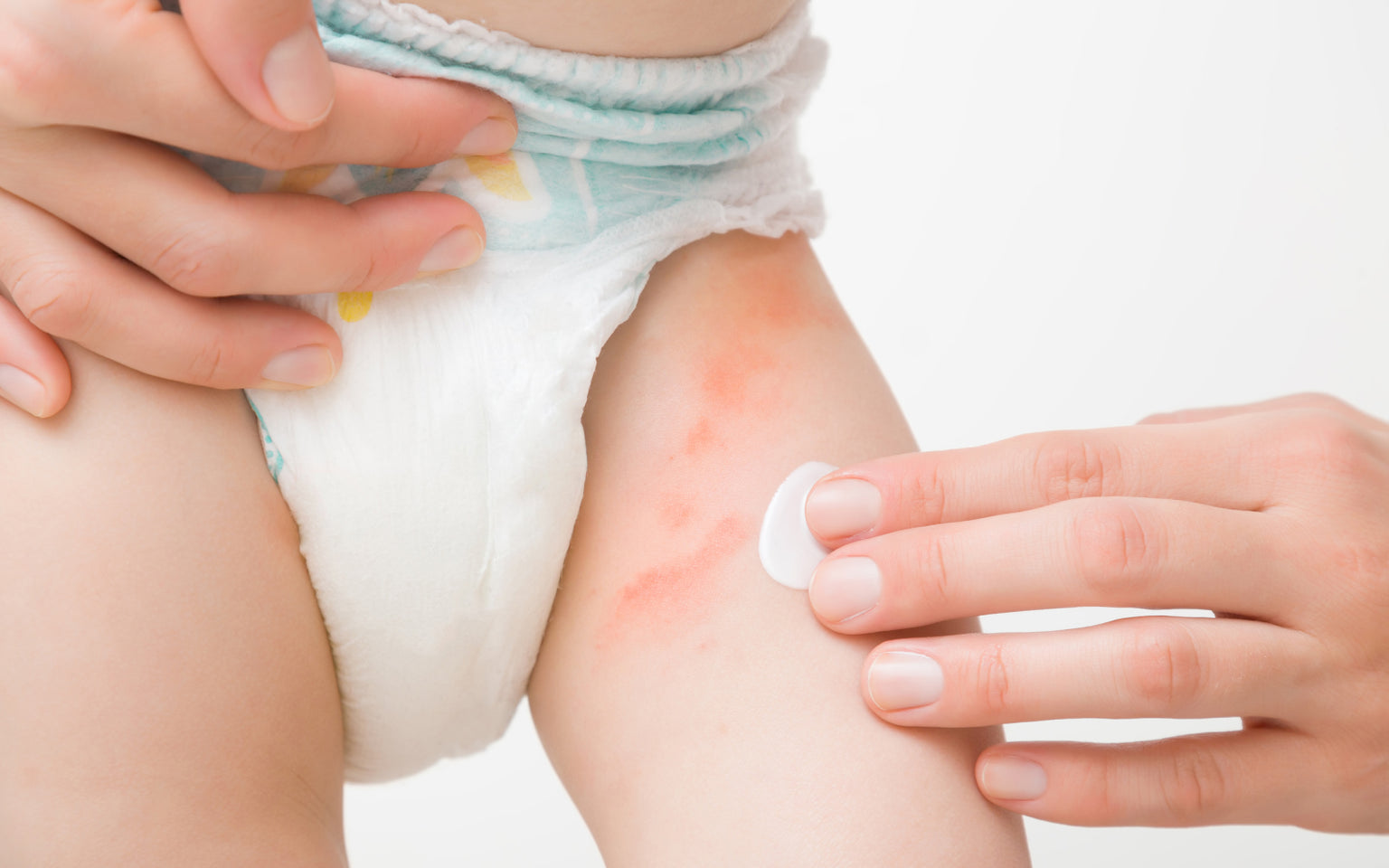Identifying & Treating Yeast Diaper Rash
As a parent, it can seem like there is a never-ending list of things to know about caring for your baby. Just when you feel like you’ve gotten the hang of preventing and treating diaper rash, boom, suddenly the diaper rash looks different. You’re using the same cream and changing diapers often, but it’s not going away. What should you do?
Don’t panic. Turns out there are different kinds of diaper rash—some are caused by irritation (diaper dermatitis – “regular” diaper rash) and some are caused by fungus (yeast diaper rash). If diaper rash isn’t going away with your usual diaper rash cream, there’s a good chance it’s because your baby has a yeast diaper rash.
What Is Yeast Diaper Rash?
Yeast diaper rash is caused by Candida albicans yeast. This is a naturally growing fungus that lives in and on our bodies, but it can sometimes grow a bit out of control. Its growth is usually kept in check by having a balance of healthy bacteria, but it also loves warm, moist areas like in a mouth (oral thrush) or under a diaper.
Yeast diaper rash can arise because of this overgrowth or as a side effect of antibiotics taken by the baby or you, if you’re breastfeeding. Yeast overgrowth can also happen at the site where a diaper rash caused by irritation already exists. Yeast diaper rashes are common, but they do present with symptoms that differ somewhat from regular diaper rashes.
Identifying Yeast Diaper Rash
The difference between regular diaper rash and yeast diaper rash can be easy to spot once you know the signs.
Regular diaper rash usually goes away within 3 days of applying diaper rash cream. The rash or chapped area is pink to reddish and typically appears on the buttocks only.
Yeast diaper rash occurs more in the skin folds and upper thigh where the diaper meets the legs, or even outside of the diaper. Symptoms can be more severe, especially if left untreated. Look for:
- Raised red dots, bumps or pimples
- Rash that is shiny, red, dark red or purplish
- Scaly, cracked or oozing skin (in severe stages)
- One main rash area with smaller breakouts (satellite lesions) in nearby areas
It’s important to treat yeast rashes quickly because the red bumps can become raw, bright red, sore and weepy. These can cause more discomfort and itchiness than regular diaper rashes, as well as pain and bleeding if the rash becomes severe.
Treating Yeast Diaper Rash
If you’ve seen or talked to your baby’s doctor about a diaper rash that won’t go away, they likely prescribed or recommended an antifungal cream. Over-the-counter antifungal creams that contain clotrimazole, miconazole, nystatin or ketoconazole can effectively treat yeast diaper rash when used as directed. This usually means applying a thin layer with each diaper change.
Other steps that can help include:
- Change diapers more often – Keeping the diaper area clean and dry is crucial. Change diapers frequently and avoid leaving your baby in a wet or soiled diaper for long. Be sure to wash your hands before and after changing diapers.
- Gently clean your baby’s bottom – Use a soft cloth and warm water to clean your baby’s bottom. Avoid using wipes, soaps or lotions that contain alcohol, propylene glycol or fragrances, as they can irritate the skin further.
- Apply a barrier cream over the antifungal cream – This will help protect the skin from further irritation. A barrier cream that contains zinc oxide can be applied over the antifungal cream.
- Give your baby diaper-free time – Letting your baby’s skin breathe can help to speed up healing. Do this after a soiled diaper change to minimize the risk of accidents. Lay your baby on a soft towel and let them enjoy some wiggle time.
If the rash persists or worsens, talk to your baby’s doctor for next steps. Some yeast rashes can be stubbornly persistent. The doctor might prescribe a stronger antifungal treatment, a steroid ointment or investigate other potential underlying causes.
One thing is certain in parenthood—there will always be challenges along the way. However, when it comes to diaper rash, we’re here to help. Check out Diaper Rash 1-2-3 on our website to see other types of diaper rash and get tips on preventing and treating even stubborn diaper rash.



